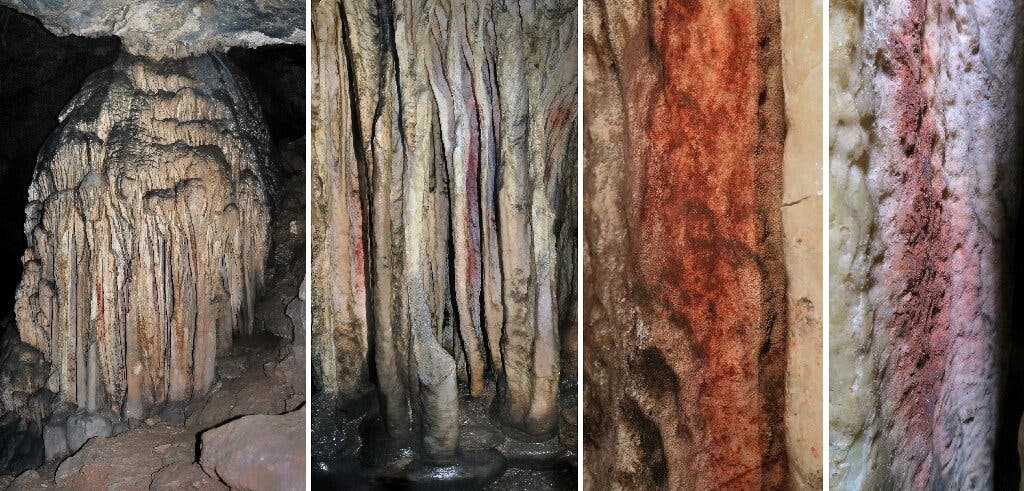Spanish cave paintings confirmed to have been made by the Neanderthals
They painted it thousands of years before we got to Europe.
Alexandru Micu by Alexandru Micu August 3, 2021

A general view and a close-up of a partly colored stalagmite tower in Cueva de Ardales. Image credits Africa Pitarch Martí et al., (2021), PNAS.
The Cueva de Ardales cave in Málaga, Spain, is one of the most impressive and well-preserved examples of Paleolithic cave paintings in southwestern Europe. More than a thousand different representations have been found here, indicative of the cave being inhabited by many generations of early humans.
One stalagmite here was painted red ochre thousands of years before the emergence of modern humans in Europe, according to a new paper, and offers us a glimpse into the history and culture of the Neanderthals.
Man-made
It was first suggested that Neanderthals painted this stalagmite red in 2018, when an initial dating of the pigment showed it’s at least 64,800 years old. However, the results were contested, and “a scientific article said that perhaps these pigments were a natural thing,” explained co-author Francesco d’Errico for Agence France-Presse. It proposed that the markings were the result of iron oxide (iron) deposited by water infiltrating into the cave.
The new study shows that the deposition and composition patterns in this pigment are not consistent with natural processes. It was most likely applied through splattering (mixed with water) and blowing (in a powdered form).
Furthermore, the authors explain that pigment was repeatedly applied to the stalagmite over time, at least over ten millennia.
More:
https://www.zmescience.com/science/spanish-cave-paint-neanderthal-23467834/


